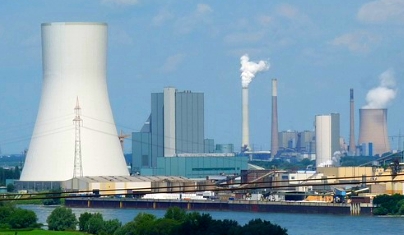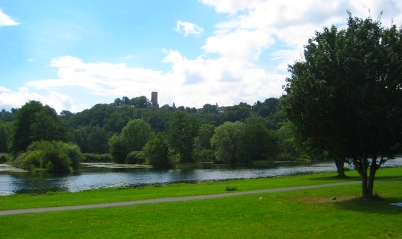What is the Ruhr area ?
The exact delimitation of the Ruhr area is somewhat controversial. In most literature sources, the Ruhr area includes the independent cities and districts that belong to the Regionalverband Ruhr. We have adopted this definition.
Incidentally, other terms for the Ruhr region are Revier, Ruhrpott and Pott. The term “Kohlenpott” used to be common, but today it is rare.
The 11 independent cities in the Ruhr area are, in alphabetical order: Bochum, Bottrop, Dortmund, Duisburg, Essen, Gelsenkirchen, Hagen, Hamm, Herne, Mülheim and Oberhausen.
The 4 districts that belong to the Regionalverband Ruhr, i.e. to the Revier, are: Ennepe-Ruhr-Kreis (south), Landkreis Wesel (north-west), Landkreisre Recklinghausen (north), Landkreis Unna (north-east).
Inhabitants of the Ruhr
The Ruhr region currently (as of 2019) has about 5.1 million inhabitants. A good 6% of all inhabitants of Germany live in the Ruhr area. If the Pott was a city, it would be by far the largest city in Germany. Berlin, the largest city in Germany, has about 3.5 million inhabitants. If you like, the Revier is 50% larger than Berlin.
In the European Union, only the metropolitan regions of Paris and London (until Brexit) are larger conurbations than the Ruhr area (measured by population).
Area of the Ruhr
The area of the Ruhr region is 4,435 square kilometres. This is almost exactly 13 % of the area of NRW (North Rhine-Westphalia).

Population density Ruhr area
Using the figures from above (4435 km² and 5.1 million inhabitants), it is easy to calculate the population density. The Ruhr has a population density of 1,150 people per square kilometre. Germany has a population density of about 230 people per km². So the Ruhr is only 5 times more densely populated than Germany on average.
There are also large, green areas in the Ruhr region, such as nature reserves, forests, meadows and fields. The Revier is greener than most people think.

Large cities Ruhr area
Large cities are cities with more than 100,000 inhabitants. In the Ruhr area these are: Dortmund, Essen, Duisburg, Bochum, Gelsenkirchen, Oberhausen, Hagen, Mülheim, Hamm, Herne, Bottrop, Recklinghausen and Moers. According to this list, the number of large cities in the Ruhr region is therefore 13. 11 of these cities are district-free large cities, 2 belong to a district (Recklinghausen and Moers).
Largest city in the Ruhr area
For a long time Essen was the largest city in the Ruhr area (by population). Since around 2003, Dortmund has had slightly more inhabitants than Essen. Today (2017), about 586,000 residents live in Dortmund. In Essen there are about 3000 to 4000 inhabitants less. The two largest metropolises in the Revier are almost exactly the same size in terms of population. The third largest city in the district is Duisburg, followed by Bochum and Gelsenkirchen.
Government Districts Ruhr Area
The federal state of North Rhine-Westphalia (NRW) is divided into 5 administrative districts. Not everyone in the Ruhr area is happy about this division, as the borders of the administrative districts run right through the middle of the Ruhr area. In total, the Ruhr region belongs to 3 different administrative districts.
For example, the cities of Duisburg, Essen, Mülheim and Oberhausen belong to the Düsseldorf administrative district. Gelsenkirchen, Bottrop and Recklinghausen, however, are part of the administrative district of Münster. Dortmund, Bochum and Herne are in the administrative district of Arnsberg.
Highest mountain in the Ruhr area
As far as we know, the highest mountain in the Ruhr area is the Wengeberg in the small town of Breckerfeld (population just under 10,000) in the rather rural north of the district. There is a restaurant and an aerial installation on the summit. At 441 metres above sea level, the Wengeberg is more of a hill.
Largest lake in the Ruhr area
The largest lake in the Ruhr region is probably the Haltener Stausee in Haltern am See in the north of the Potts. The lake has a size of around 3 km² and is also called the Haltern Dam. Not much smaller, at 2.6 km², is the well-known Baldeneysee in the south of Essen.

More figures on the Ruhr region follow.